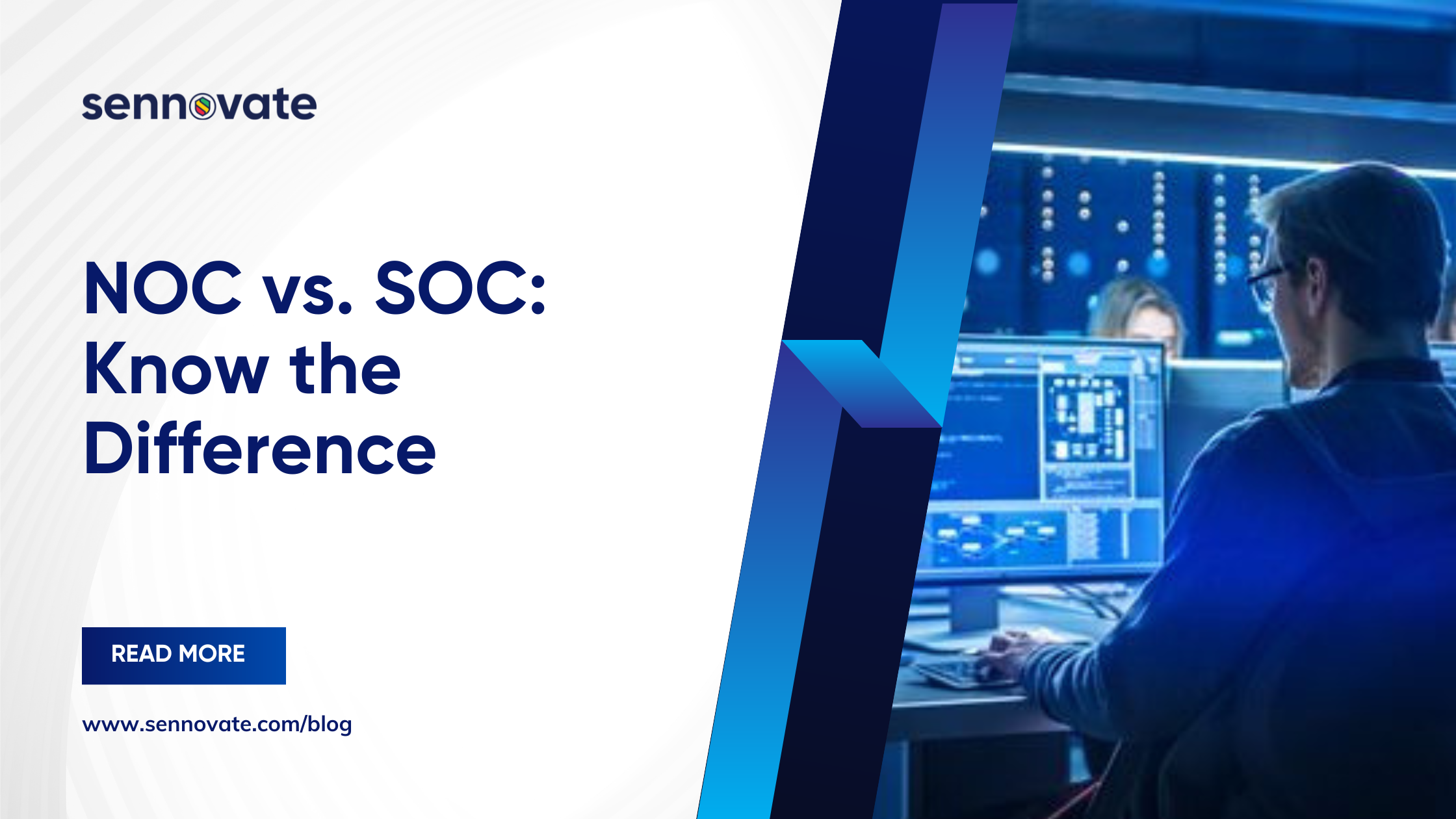
NOC vs. SOC: Know the Difference
Network operations center (NOC) and security operations center (SOC) are the buzzwords we are hearing constantly these days. But what are they?
What is a NOC (Network Operations Center)?
A Network Operations Center (NOC) acts as the central hub within an organization, responsible for monitoring, managing, and maintaining the network infrastructure. It is staffed by dedicated network administrators and technicians who ensure the smooth operation of network systems, devices, and services.
The primary goal of a NOC is to proactively monitor network performance, quickly identify potential issues, and promptly address them. This involves continuous surveillance of network devices, servers, applications, and other components to detect any disruptions or failures.
Equipped with advanced monitoring tools, NOC teams gain real-time visibility into network health, traffic patterns, and performance metrics. By analyzing this data, they can identify patterns, troubleshoot problems, and optimize network performance.
In addition to monitoring, NOCs are responsible for configuration management, ensuring accurate and up-to-date configurations for network devices. Regular audits are conducted to uphold network security and performance standards.
Furthermore, NOCs handle incident response for network issues, initiating troubleshooting procedures and collaborating with other teams or service providers to restore normal operations.
Overall, NOCs play a vital role in maintaining network availability, optimizing performance, and ensuring smooth network infrastructure.
What is a SOC (Security Operations Center)?
A Security Operations Center (SOC) is a specialized facility or team within an organization focused on cybersecurity. It monitors, detects, analyzes, and responds to security incidents and threats in real-time to protect sensitive data, systems, networks, and assets.
SOCs employ skilled security analysts, advanced technologies, and robust processes to maintain a strong security posture. They continuously monitor network traffic, system logs, and other relevant data sources to identify and investigate potential security breaches.
SOCs collaborate with internal teams and external entities to align with business objectives, regulatory requirements, and obtain threat intelligence.
By establishing a SOC, organizations enhance their cybersecurity defenses, gain better visibility into threats, and respond effectively to incidents.
Implementation Choice Depends on Business Needs
Deciding whether to implement a NOC, SOC, or both depends on factors such as the organization’s reliance on network infrastructure and prioritization of cybersecurity.
A NOC is essential for organizations heavily reliant on network availability and smooth operations. It ensures optimal performance, minimizes downtime, and addresses network concerns promptly.
A SOC is necessary for organizations prioritizing cybersecurity and protecting sensitive data. It constantly monitors, detects, and responds to security incidents, mitigating risks promptly.
In many cases, implementing both a NOC and a SOC is recommended for comprehensive network management and security. This integrated approach fortifies overall network performance, availability, and security.
The decision ultimately depends on the organization’s industry, size, network complexity, regulatory obligations, risk landscape, and budget. Consulting with IT professionals or industry experts can provide valuable guidance for making an informed decision tailored to the organization’s specific circumstances.
Having any doubts or want to have a call with us to know more about our Unified SOC, an All-in-One SOC solution?
Contact us right now by clicking here, Sennovate’s Experts will explain everything on call in detail.
You can also write a mail to us at [email protected] or call us on +1 (925) 918-6618.
About Sennovate
Sennovate delivers Managed Security Operations Center (SOC) solutions, custom Identity and Access Management (IAM) solutions and Social Engineering Defence (SED) services to businesses around the world. With global partners and a library of 2000+ integrations, 10M+ identities managed, we implement world-class cybersecurity solutions that sa ve your company time and money. We offer a seamless experience with integration across all cloud applications, and a single price for product, implementation, and support. Have questions? The consultation is always free. Email [email protected] or call us at: +1 (925) 918-6618.
